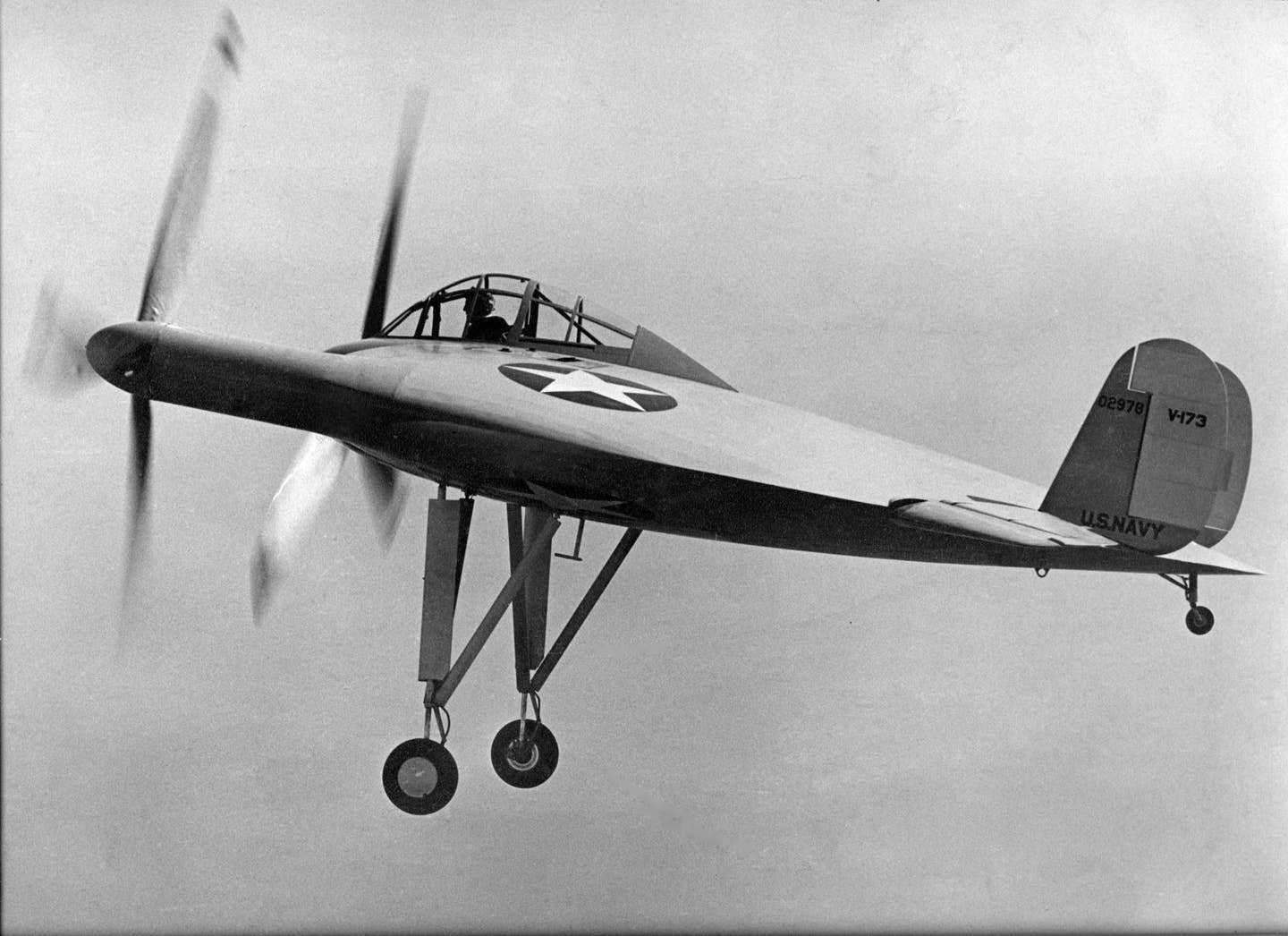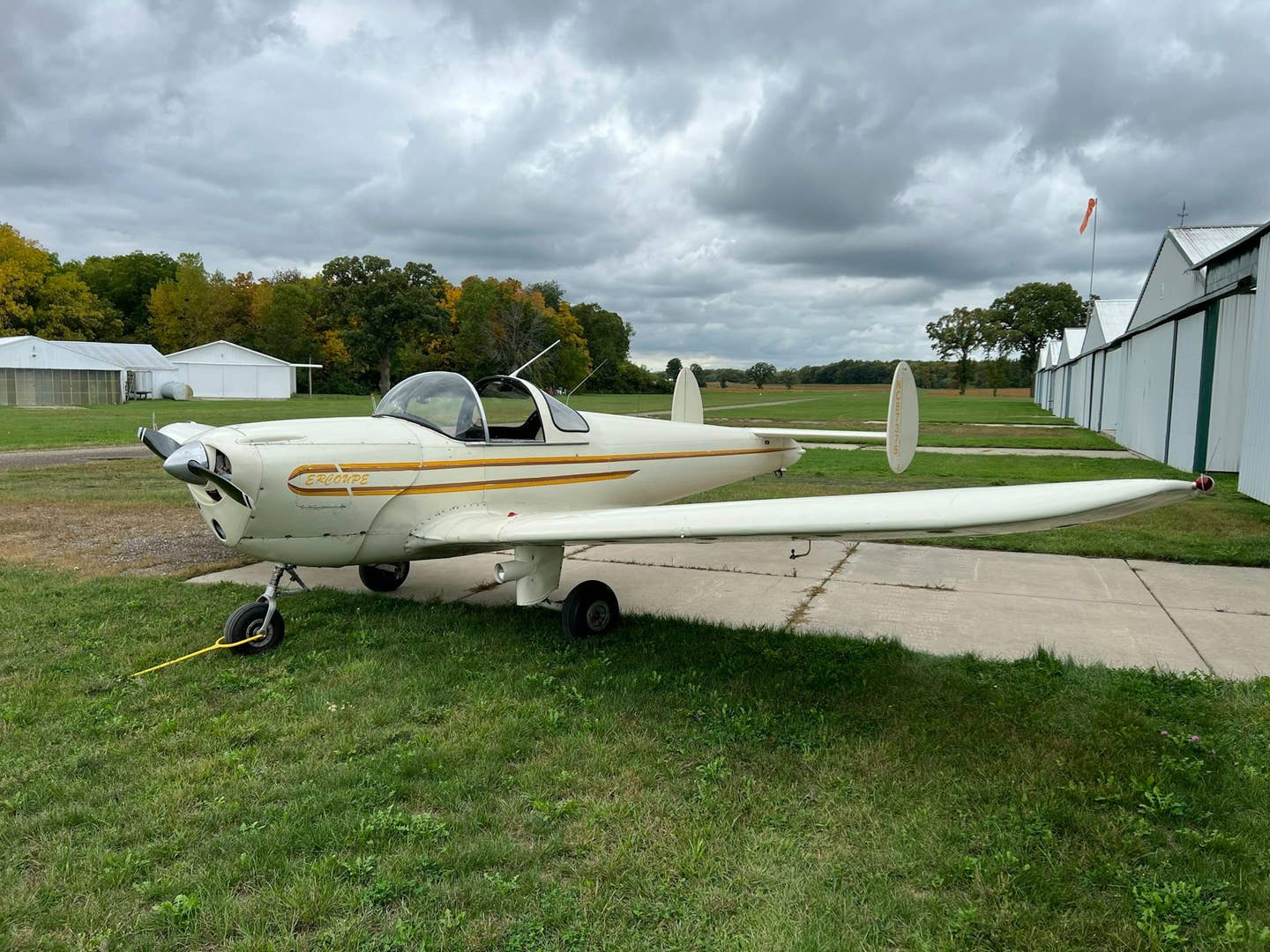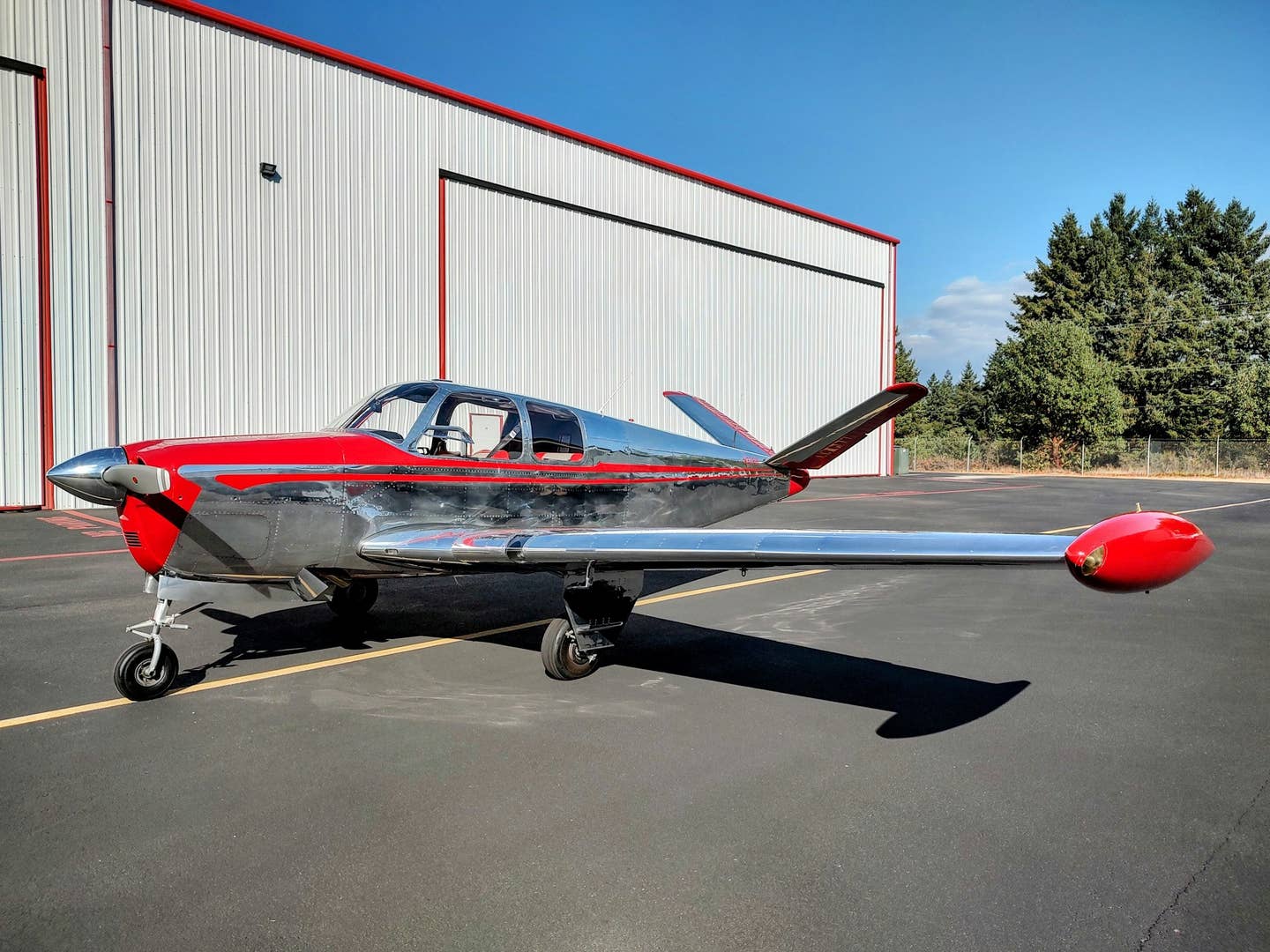V-173 Flying Pancake: The Amazing STOL “Flying Saucer”
Learn all about Charles Zimmerman’s ’Zimmer Skimmer.’

The V-173 Flying Pancake on a test flight circa 1942.
As is often the case, many of the best ideas are just waiting for the right combination of circumstances and resources to converge. The V-173 "Flying Pancake" is a perfect example. In the late 1930s, with war drums beating louder, the U.S. Navy was looking for an airplane that many thought was impossible. A single design that could take off on the abbreviated deck of a ship, demonstrate fighter plane speed and maneuverability, and then land back on that same short deck. Enter aerodynamic engineer Charles Zimmerman and his "Zimmer Skimmer."
In 1935, Zimmerman won a grant from the National Advisory Committee for Aeronautics (NACA) to develop a compact short takeoff and landing (STOL) aircraft. His unique design featured a 7-foot wingspan, blended wing body design and large, slow-turning propellers. Unfortunately, problems with propeller synchronization grounded the Skimmer, and it never flew. However, it did catch the eye of Vought Aircraft and the U.S. Navy. Vought immediately hired Zimmerman as lead engineer on the Navy's STOL project. To minimize risk and shorten development time, the first prototype would not be a combat-ready aircraft but rather a technology demonstrator, the V-173 Flying Pancake.
Designed and built to the general aviation standards of the era, the V-173 was constructed of wood and fabric with aluminum reserved for the fairing and cowling areas. Zimmerman described the aircraft shape as discoidal. The fuselage formed a curved wing section approximately 25 feet in diameter. Two Continental A80, four-cylinder opposed air-cooled engines, which later powered scores of Pipers and Taylorcrafts, were buried in the blended wing. The two mechanical fuel-injected four-bangers were connected to the twin three-bladed, slow-turning propellers through a complex system of driveshafts and clutches. This system allowed either engine to power both propellers in the event of a single failure.
The unique propeller concept was the key to both the slow and high-speed performance of the aircraft. In conventional aircraft, wingtip vortices create a significant drag penalty. To cancel out these vortices, the V-173's propellers, located at the outer edges of the lifting body, turned in the opposite direction of the vortices, effectively canceling the drag. While the two Continental A80s ran at 2,500 RPM, the large three-bladed props turned at a lazy 400 RPM. The large slow-turning props provided smooth airflow over the vehicle for enhanced low-speed performance. Additionally, each fully adjustable propeller blade flexed forward at the root, much like helicopter rotor blades. Developing this complex system, similar to that of the modern V-22 Osprey, delayed flight testing for several months but was eventually perfected. Fuel quantity was limited to two 10-gallon tanks, each feeding one of the Continental A80 engines. Due to the 22-degree angle of the blended wing, the floor of the cockpit was glazed with plexiglass for takeoff and landing. The original configuration included twin conventional vertical and horizontal tail surfaces. Ready for takeoff, the Pancake weighed in at a little over 3,000 pounds.
Test pilot Boone Guyton made the first flight on Nov. 23, 1942. It lasted 13 minutes, and it nearly ended in disaster. Lateral controls were too heavy, drivetrain vibration levels were high, and the conventional elevators were not powerful enough to transition from the steep climb into horizontal flight. Guyton's saving grace, literally, was that the V-173 would not stall. In response, Zimmerman replaced the conventional horizontal stabilizers with all-flying surfaces, dubbed "airivators." These powerful fully moveable surfaces functioned as both elevators and ailerons and were powerful enough to allow transition to and from cruise flight.
On later flights, a pair of unique landing flaps were added between the twin rudders. Pilots complained that ground effect pressure prevented the tail from settling to the runway during landing. The addition of a set of two landing flaps that deflected upward relieved the pressure and made normal landings possible. These and other issues were addressed, and the V-173 Flying Pancake went on to make over 190 successful flights and log approximately 132 hours in the air. The bright yellow prototype could take off in less than 200 feet, cruise at 138 miles per hour, and land at 15 miles per hour. Charles Lindbergh, who flew the V-173, noted that it could nearly hover, would not stall under power with full aft stick, and was easy to land.
The Navy was impressed and immediately ordered two full-scale fighter prototypes. These were the Vought XF5U, dubbed, appropriately, the Flying Flapjack. Amazingly, the Flapjack was only a little larger than the V-173, with a 28-by-32 width and length. However, it was powered by two Pratt & Whitney Radial engines of 1,400 horsepower each, yielding a 17-fold increase in power to offset its fivefold increase in gross weight. The Flapjack featured an ejection seat, retractable gear and a design speed of over 450 miles per hour. Unfortunately, the XF5U program was canceled in early 1947, just prior to its first flight---it was doing high-speed taxi tests and short hops on the runway. Program delays, the end of World War II and the dawn of the Jet Age proved to be simply too much for the Flying Flapjack.
However, all the advances made by the little V-173 Flying Pancake were not lost. The all-moving "airivators" are now the "elevons" that grace the tails of a multitude of delta and swing-wing jets, providing both roll and pitch control. And the interconnected propeller drive system, finally perfected in the Vertical Takeoff and Landing (VTOL) V-22 Osprey, has become an indispensable tool for the armed services. Oh, and one more thing. The Flying Pancake test flights in the Stratford, Connecticut, region generated some of the earliest UFO reports on record!
Fortunately, the V-173 Flying Pancake prototype was not destroyed. Sixty years later, on loan from the Smithsonian, it was lovingly restored by a team of Vought retirees. Today, you can see this incredible airplane on display at the Frontiers of Flight Museum at Love Field in Dallas, Texas. Enjoy!
Learn about another Incredible Plane, the Mooney M22 Mustang.

Subscribe to Our Newsletter
Get the latest Plane & Pilot Magazine stories delivered directly to your inbox






